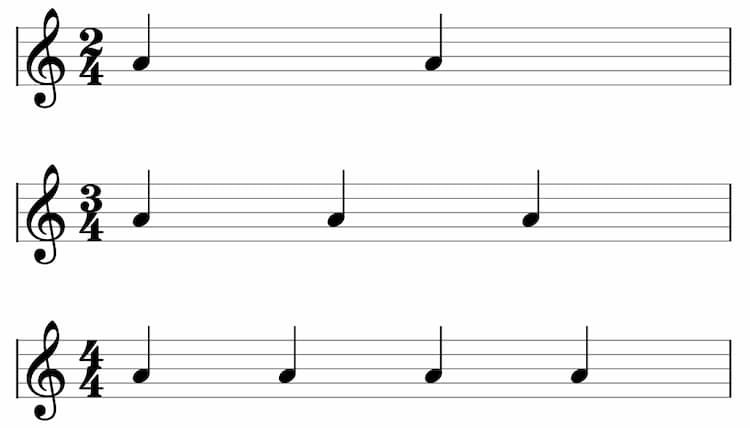Are you tired of strumming the same old chords in the same old way? Do your guitar rhythms sound about as dynamic as a limp noodle? Fear not, dear reader, for we have just the tutorial you need to inject some life into your playing. Get ready to shake things up, groove like never before, and become the guitar maestro you were always meant to be. This comprehensive guide will have you crafting killer rhythms in no time. So grab your guitar, buckle up, and get ready for a wild ride through the wonderful world of dynamic guitar rhythms!
Contents
- 1 Understanding the Fundamentals of Guitar Rhythms
- 2 Exploring Time Signatures and Their Role in Rhythm Creation
- 3 The Art of Strumming Patterns and Palm Muting Techniques
- 4 Incorporating Percussive Elements for Enhanced Dynamics
- 5 Advanced Rhythmic Techniques: Syncopation and Polyrythms
- 6 Crafting Your Unique Guitar Rhythm: Tips and Strategies
- 7 Common Pitfalls in Rhythm Guitar Playing and How to Avoid Them
- 8 FAQs
- 9 Rock on, Guitarists!
Understanding the Fundamentals of Guitar Rhythms
So you’ve picked up a guitar and you’re ready to rock out like a pro. But before you start shredding like a madman, it’s important to understand the fundamentals of guitar rhythms. Trust me, you don’t want to be that guy who thinks he’s nailing a killer riff when he’s really just playing a weird, off-beat mess.
First things first, let’s talk about timing. Rhythms are all about keeping in time with the music, like a metronome on steroids. You need to feel the beat in your bones, like you’re the heartbeat of the band. Don’t rush it or drag behind, find that sweet spot where you’re grooving like a boss.
Next up, let’s delve into different strumming patterns. There’s a whole world of strumming out there, from basic downstrokes to complex fingerpicking. Experiment with different patterns and find what feels right for the song you’re playing. And remember, practice makes perfect – so don’t get discouraged if you can’t nail that fancy flamenco strum on the first try.
And finally, let’s talk about dynamics. Playing guitar isn’t just about hitting the strings, it’s about feeling the music and expressing yourself. Use dynamics to add emotion and depth to your playing, from soft and sweet to loud and powerful. So crank up that volume, unleash your inner rock god, and show the world what you’re made of.

Exploring Time Signatures and Their Role in Rhythm Creation
Time signatures are like the secret sauce of music – they add flavor, depth, and a little bit of mystery to any rhythm. Think of them as the quirky roommate of the musical world, always bringing something interesting to the table.
When exploring time signatures, it’s important to understand their role in rhythm creation. They dictate how many beats are in a measure and what kind of note gets the beat. It’s like a musical game of Simon Says – the time signature says “jump!” and the rhythm follows suit.
One of the most common time signatures is 4/4, also known as the “everybody join the party” time signature. It’s like the friend that always shows up to the jam session with pizza and beer – reliable, fun, and easy to groove to. Other time signatures, like 7/8 or 5/4, are more like the eccentric artist who marches to the beat of their own drum – unpredictable, avant-garde, and always keeping you on your toes.
So next time you’re creating a rhythm, remember to play around with different time signatures. Embrace the weirdness, the funkiness, and the unexpected twists and turns they bring to your music. Who knows, you might just stumble upon a rhythm so catchy, it’ll have everyone dancing like no one’s watching!

The Art of Strumming Patterns and Palm Muting Techniques
Mastering strumming patterns and palm muting techniques is like learning how to do a secret handshake with your guitar. It’s that special something that will make your playing stand out from the rest. So grab your guitar, your favorite pick, and let’s dive into the art of strumming patterns and palm muting.
First things first, let’s talk about strumming patterns. Think of strumming patterns as the dance moves for your guitar. You want to keep things interesting, mix it up, and make sure you don’t step on anyone’s toes (or strings). Experiment with different patterns like **down-up-down-up**, **down-down-up-up**, or even **down-down-up-down-up**. Your fingers will be grooving in no time!
Now, onto palm muting. Palm muting is like having a secret weapon in your guitar arsenal. It allows you to add a percussive, muted sound to your playing that will make listeners go, “Whoa, how did they do that?” To palm mute like a pro, lightly rest the side of your picking hand on the strings near the bridge of the guitar. Practice finding that sweet spot where the strings are muted just enough to give you that killer sound.
Remember, mastering the art of strumming patterns and palm muting takes practice, patience, and a whole lot of creativity. So keep strumming, keep muting, and most importantly, keep having fun with your guitar. Your fingers will thank you later!

Incorporating Percussive Elements for Enhanced Dynamics
If you’re looking to take your music to the next level, consider . Adding some rhythmic flair to your compositions can really make them pop!
One way to spice things up is by using unconventional percussion instruments. Think outside the box – literally. Grab that coffee mug sitting on your desk and give it a tap for a unique sound. Get creative with everyday objects like pens, water bottles, or even a squeaky toy for some added texture.
Another fun idea is to experiment with different tempos and rhythms. Mix things up by incorporating syncopated beats or polyrhythms to keep your listeners on their toes. Don’t be afraid to break out of the traditional 4/4 time signature – who says you can’t have a song in 7/8? Embrace the chaos!
Lastly, don’t forget to layer your percussive elements to build intensity and add depth to your music. Create a solid foundation with a simple kick drum or snare pattern, then layer on top with more intricate rhythms and accents. The more layers, the more powerful your sound will be. So go ahead, play around with different sounds and rhythms, and watch your music come alive!

Advanced Rhythmic Techniques: Syncopation and Polyrythms
Are you tired of playing the same old rhythms over and over again? Are you ready to take your drumming to the next level? Well, buckle up buttercup, because we’re diving headfirst into the world of advanced rhythmic techniques: syncopation and polyrhythms!
Syncopation, my dear drummers, is like adding a little spice to your beats. It’s those unexpected off-beats that make your rhythms pop and sizzle. So, instead of sticking to the boring old 1-2-3-4, why not try mixing it up with some syncopated hits? Your audience will thank you for keeping them on their toes!
Now, when it comes to polyrhythms, well, we’re talking about a whole ‘nother level of drumming wizardry. It’s like patting your head while rubbing your belly, but on steroids. With polyrhythms, you’re playing multiple rhythms simultaneously, creating a mind-bending, groove-inducing masterpiece. So, strap in and get ready to blow some minds with your rhythmic prowess!
Remember, mastering syncopation and polyrhythms takes time and practice. So, don’t get discouraged if you don’t nail it on the first try. Keep at it, experiment, and most importantly, have fun with it! Who knows, you might just become the next drumming prodigy that everyone is talking about. Rock on!
Crafting Your Unique Guitar Rhythm: Tips and Strategies
Alright, so you’ve mastered the basic chords and strumming patterns on your guitar, but now it’s time to take things to the next level and craft your own unique rhythm. Here are some tips and strategies to help you stand out from the crowd:
First off, don’t be afraid to experiment with different time signatures. Who says you have to stick to 4/4 all the time? Try throwing in some 6/8 or even 5/4 to shake things up and add a little spice to your rhythm playing.
Another key to crafting your unique guitar rhythm is to focus on dynamics. Don’t just strum away at the same volume all the time – mix it up with some loud accents and quiet moments to keep your listeners on their toes.
And finally, don’t forget to incorporate some percussive elements into your playing. Tap on the body of your guitar, use a pick to create some rhythmic patterns, or even experiment with fingerstyle techniques to add some extra flair to your rhythm playing. Remember, the key to crafting your own unique guitar rhythm is to have fun and let your creativity shine!
Common Pitfalls in Rhythm Guitar Playing and How to Avoid Them
So you’ve picked up the guitar and you’re ready to rock out on rhythm! But beware, there are some common pitfalls that many budding guitarists fall into. Here are some tips on how to avoid them:
- Playing too fast: It’s easy to get caught up in the excitement and play at a breakneck speed, but remember that rhythm is all about timing. Take a deep breath, slow down, and focus on keeping a steady beat.
- Ignoring dynamics: Dynamics are what give your playing emotion and depth. Don’t be afraid to vary your volume and intensity to add interest to your rhythm playing.
- Stiff posture: Playing guitar is not just about moving your fingers, it’s about feeling the music in your whole body. Loosen up, relax, and let the music flow through you.
Remember, rhythm guitar is not just a technical exercise, it’s an art form. So don’t get caught up in the pitfalls, stay focused, practice regularly, and most importantly, have fun!
FAQs
How can I add variety to my guitar rhythms?
Well, my friend, the key to crafting dynamic guitar rhythms is to experiment with different strumming patterns, accents, and syncopation. Don’t be afraid to step out of your comfort zone and try something new!
What are some tips for creating interesting chord progressions?
Ah, now we’re getting into the fun stuff! To spice up your chord progressions, try incorporating modal interchange, secondary dominants, and unexpected chord substitutions. Your audience will thank you for keeping them on their toes!
How can I improve my rhythm guitar playing technique?
Practice, practice, practice! Focus on your timing, dynamics, and muting techniques to really make your guitar rhythms pop. And don’t forget to groove along to your favorite songs – imitation is the sincerest form of flattery, after all!
Any advice for writing catchy guitar riffs?
Absolutely! When it comes to crafting killer guitar riffs, simplicity is key. Try playing around with repeating motifs, catchy melodies, and rhythmic hooks that will stick in your listener’s head like gum on a shoe. Trust me, they won’t be able to resist tapping their foot along!
How can I incorporate fingerstyle techniques into my rhythm playing?
Ah, fingerstyle – the cherry on top of the guitar-playing sundae! To spice up your rhythms with fingerstyle techniques, experiment with Travis picking, fingerpicking patterns, and percussive elements like slaps and taps. Your audience will be blown away by your multi-tasking skills!
Rock on, Guitarists!
Congratulations on making it through our comprehensive tutorial on crafting dynamic guitar rhythms! Remember, practice makes perfect, so keep strumming those strings and experimenting with different rhythms to find your unique style.
Now go forth and rock out like never before! Who knows, maybe one day you’ll be headlining at the next Woodstock. Keep the music alive and keep those rhythms groovin’.
Until next time, keep shredding! 🤘🎸


